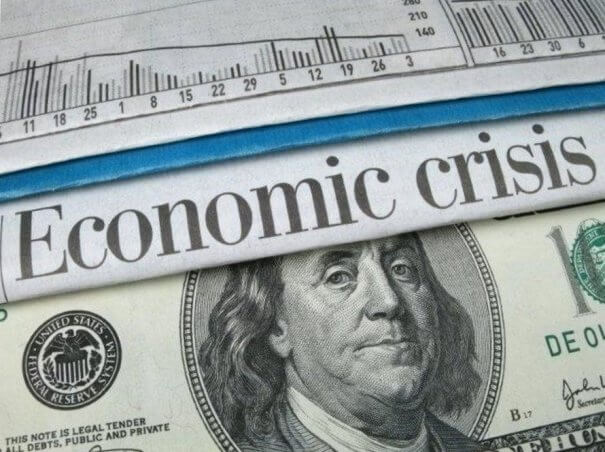This article is written by Abanti Bose, from Amity University, Kolkata, India. This article talks about the 2008 global financial crisis with special reference to how it affected the Indian economy and the incorporation of legal measures to prevent another financial crisis in the future.
Table of Contents
Introduction
A financial crisis is a kind of crisis that affects the functioning of a financial system such as banks, mutual funds, investment banks, etc. The 2008 financial crisis is one of the worst financial crises since the Great Depression of 1929. The crisis led to the “great recession” where housing prices dropped and the unemployment rate increased, financial institutes started to sink and some were absorbed by larger entities. The United States was deeply affected, more than eight million citizens lost their jobs, approximately 2.5 million businesses were devastated, and close to four million homes were foreclosed in less than two years. Even ten years after the crisis there are disastrous economical consequences in the United States and also across the globe.
Background: 2008 financial crisis
The 2008 global financial crisis stretched over a year, causing the collapse of Lehman Brothers in September 2008, followed by the Wall Street bailout. The collapse of Lehman Brothers marked the largest bankruptcy in US history. During that time financial markets were in free fall, with the major US indexes suffering from their worst losses as the Treasury Department, White House and Congress struggled to put forward a comprehensive plan to prevent the crisis and to restore confidence in the economy.
The financial crisis was caused due to the upward spiral in home prices and as borrowed took advantage of the low mortgage rates and lenders sold the loans to Wall Street banks which packaged them into what was billed as low financial instruments such as mortgage-backed securities and collateral debt obligation (CDO). The early signs of the crisis were visible when the home prices started to fall which led to a 40% decline in the US home construction index during 2006. This not only affected the new homeowners, but also many subprime borrowers couldn’t handle the higher rates and started defaulting on their loans. Although the great recession ended in 2009, the economic damage was immense. A lot of people suffered from unemployment and high prices of essential items. The job market was slow to recover and housing prices remained suppressed.
Causes
In 2000, the central bank of the United States anticipating a recession, reduced their federal fund rates (the interest rate that banks charge each other for overnight loans of federal funds) from 6.5 to 1.75. The significant decrease of the federal fund rates enabled banks to extend consumer credit at a lower price. The consumers took advantage of the situation and purchased durable goods such as cars, electronic appliances, houses, etc. Due to the changes in banking laws, the banks were able to give mortgage loans to subprime customers along with balloon payments or adjustable interest rates. As the housing price continued to increase the customers could protect themselves against the mortgage loans by refinancing, borrowing against the increased values of their homes, or even selling their homes at a profit to pay off the mortgage, but in case of default by the customer the bank could repossess the property and even sell at a higher price than the amount of the original loan. This was a fruitful investment for the banking sector, they marketed subprime loans to the customer and encouraged them to take the loan despite having few assets, poor credits, and the possibility of them having not repaid the loan.
The subprime lending then led to securitization, where banks bundled a lot of subprime mortgages and sold them in the capital market as bonds or securities to other banks and investors including hedge funds and pension funds. In 2004, the Securities and Exchange Commission weakened the net capital requirement (the ratio of capital, assets, etc. that the banks are required to maintain against insolvency) and thus encouraged the banks to invest more money in mortgage loans. These careless processes of lending, borrowing, and securitization practices caused the “great recession” which put a dent in the global economy.
Economic impact on India
The major impacts on the Indian economy due to the 2008 global financial crisis are:
-
Stock-market crash
When the stock markets of the US and the European countries collapsed, it also affected India severely. In order to meet the liquidity requirements or liabilities of the parent companies, the Foreign Institutional Investors (FII) started selling the shares of the Indian companies held by them. Due to this the share prices rose to new heights and caused huge losses to Indian companies and investors whose wealth was wiped out. Foreign institutional investors sold more than $13 billion worth of shares of the Indian companies and repatriated them to their home companies.
-
Depreciation of Indian Rupee
When the FIIs sold the share of the Indian companies they got the amount in Indian currency which they had to convert to dollars to send them abroad. This led to the increase in demand for dollars. The Indian importers also demanded to be paid in dollars for the import of goods. The Indian banks doing foreign exchange operations also bought US dollars as no one in the financial sector was willing to lend dollars to any Indian bank. This further raised the demand for dollars; the value of one dollar in Indian currency rose to Rs. 50.6 from Rs. 39.4 in 2008.
-
Liquidity crunch in the banking sector
The process of supplying more dollars in the foreign exchange market caused the quantity of rupees in the banking sector to decline, therefore causing liquidity problems in the Indian banking and affected the credit flow to the industry for financing of working capital and fixed investment projects.
-
Exports and balance of payments
Indian foreign trade worsened during 2008-2009. It registered a deficit of $60 billion in the first half of 2008-09 as compared to $30 in the first half of 2007-08. Also due to the depreciation of Indian currency imports cost more despite the fall in international commodity prices.
-
Impact on Indian economic growth
India’s growth GDP fell to 6.8% as against 9% per annum. Apart from this there was a fall in output of automobiles, aviation, shipping industries, etc. also export-oriented industries such as textiles, leather, gems, etc. badly collapsed due to the global financial crisis. Agriculture sector registered 1.6% growth as against 4.7% in 2007-08. There was large scale unemployment in the textile, metal, leather, and jewellery sector. The unemployment rate increased drastically.
Indian government’s response
The Indian government responded to the 2008 financial crisis by following ways:
-
Monetary policy measures
The Reserve Bank of India (RBI) has been increasing the cash reserve ratio and interest rates to overcome the inflation. It also took several measures to prevent fast depreciation of the Indian Rupee due to massive outflow by FIIs and tried to increase liquidity of the banking system. RBI decreased the statutory liquidity ratio from 25% to 24% and that enabled banks to get Rupees 20,000 crores from RBI against government securities for lending to mutual funds. RBI also released Rs. 25,000 crores to the banks in connection with the farm waiver scheme of the Central Government. Certain market stabilization schemes were also undertaken to increase the liquidity with the banks. In this way about Rs. 2,00,000 crores have been infused in the domestic money market to improve the condition that was caused due to the financial crisis.
-
Fiscal stimulus
A fiscal stimulus according to Keynesian macroeconomics was also incorporated. Keynes emphasized an increase in government expenditure to defeat the depression in the 1930s. Therefore, to keep the growth momentum and to ensure 7% of the growth rate, the Indian government came up with three fiscal stimulus packages that involved an increase in government expenditure.
1. The first fiscal stimulus
It was announced on 6th December 2008 and it involved an increase in the government expenditure by Rs. 30,700 crores. This increase in the expenditure was directed towards the growth of infrastructure, housing, automobiles, etc. Furthermore to tackle the hurdle in exports the first fiscal package provided for subsidizing interest costs of exporters.
2. The second fiscal stimulus
This was announced on 2nd January 2009. The second fiscal package aimed to facilitate the supply of finance to some organizations. This permitted the public sector company, Indian Infrastructure Finance Company (IIFC) to borrow Rs. 30,000 crore from the market by issuing tax-free bonds.
3. The third fiscal stimulus package
It was announced on 24th January 2009. The government sought to boost demand by cutting service tax, customs duty, and central excise duty. The central excise duty was reduced from 10% to 2%. It was hoped that the reduction in central excise duty would lead to reduction in prices. Also to boost demand, service tax was reduced to 2%.
Thereafter, due to the above measures taken by the government, the financial crisis in India recovered in the second half of the year 2009-10. The Indian economy steadily improved and the GDP which decreased in 2008 also rose to 8.6% in the year 2009-10. Moreover, it was expected to help in generating more employment opportunities in various sectors.
Legal measures incorporated after the financial crisis
The Dodd-Frank Act was passed in 2010 in the United States to prevent another financial crisis in the future. It ensured that banks are held to a high standard of liquidity and available assets to mitigate risks. The Act required bank holding companies with more than $50 million in assets to abide by stringent capital and liquidity standards. It also created the Financial Stability Oversight Council for the purpose of coordinating the regulation of larger, “systemically important” banks. An Orderly Liquidation Fund was established for the purpose of providing financial assistance for the liquidation of big financial institutions that fall into trouble. The act also incorporated provisions that granted rulemaking power to the Securities Exchange Commission (SEC). Rules have also been adopted to bring about transparency to the swap fund and hedge fund markets. This act also directed the Federal Reserve to take the required steps to support the financial markets after the crisis.
Furthermore, in October 2008, the Congress passed the Emergency Economic Stabilization Act, which provided the treasury with approximately $700 billion to purchase the “trouble assets”. This Act helped in rescuing American institutions by spending $426.4 billion.
Comparison with 2020 pandemic situation
Although the consequences are similar between the 2008 global financial crisis and the 2020 Pandemic, there exist significant differences. Both the crises have different origins; the 2008 global financial crisis arose due to unsustainable levels of debts that have taken place when there was a lack of credit quality for many assets thus resulting in the financial system to collapse but the crisis is a health crisis, caused due to the worldwide spread of a deadly virus. Apart from this, the initial economic conditions of 2020 have been in a better position than 2008, for example, the imbalances are less pronounced, businesses and families are in less debt, etc.
However, both the crises have similar consequences such as financial crises in various sectors and huge unemployment. Economists have stated after viewing the worldwide economic condition that the 2020 pandemic situation might result in a deeper recession than the 2008 financial crisis. According to the International Monetary Fund’s latest prediction, the global GDP could fall 3% in 2020 compared to 0.1% decline in 2009. The COVID-19 pandemic is hitting several industries such as the engineering sector, travel and tourism, etc. harder than the 2008 financial crisis.
Governments around the globe have put together large-scale rescue packages to ensure the survival of their economic situation. They have come up with additional unemployment benefits and several loan programs to ease the economic condition.
Conclusion
The 2008 global financial was a severe worldwide financial crisis. Excessive risk-taking by banks combined with the bursting US housing bubble damaged the financial institutes globally. The economy across the globe was affected due to this crisis. It resulted in bank failures, a decline of housing markets, the drastic rise of unemployment, etc. Securitization, or bundling and reselling of loans has spread to various other sectors than housing. The Dodd-Frank Wall Street Reform Act was passed to prevent the crisis from repeating itself in the future. This crisis proved that the banks could not properly regulate themselves without government directions such as the implementation of the Dodd-Frank Act.
References
- https://www.bbva.com/en/from-the-great-recession-to-the-great-pandemic-the-differences-between-the-2008-and-2020-crises/
- https://www.thebalance.com/2008-financial-crisis-3305679
- https://www.investopedia.com/articles/economics/09/financial-crisis-review.asp
- https://www.britannica.com/event/financial-crisis-of-2007-2008
- https://www.business-standard.com/article/markets/global-financial-crisis-lessons-for-india-from-the-2008-crisis-and-beyond-118091001256_1.html
- https://www.economicsdiscussion.net/indian-economy/global-financial-crisis-and-the-indian-economy/11091
- https://www.economicsdiscussion.net/india/financial-crisis/indias-response-to-financial-crisis/11093
- https://academy.binance.com/economics/the-2008-financial-crisis-explained
- https://www.investopedia.com/ask/answers/033015/how-did-financial-crisis-affect-banking-sector.asp
- https://www.thebalance.com/what-caused-2008-global-financial-crisis-3306176
LawSikho has created a telegram group for exchanging legal knowledge, referrals and various opportunities. You can click on this link and join:
 Serato DJ Crack 2025Serato DJ PRO Crack
Serato DJ Crack 2025Serato DJ PRO Crack











 Allow notifications
Allow notifications



